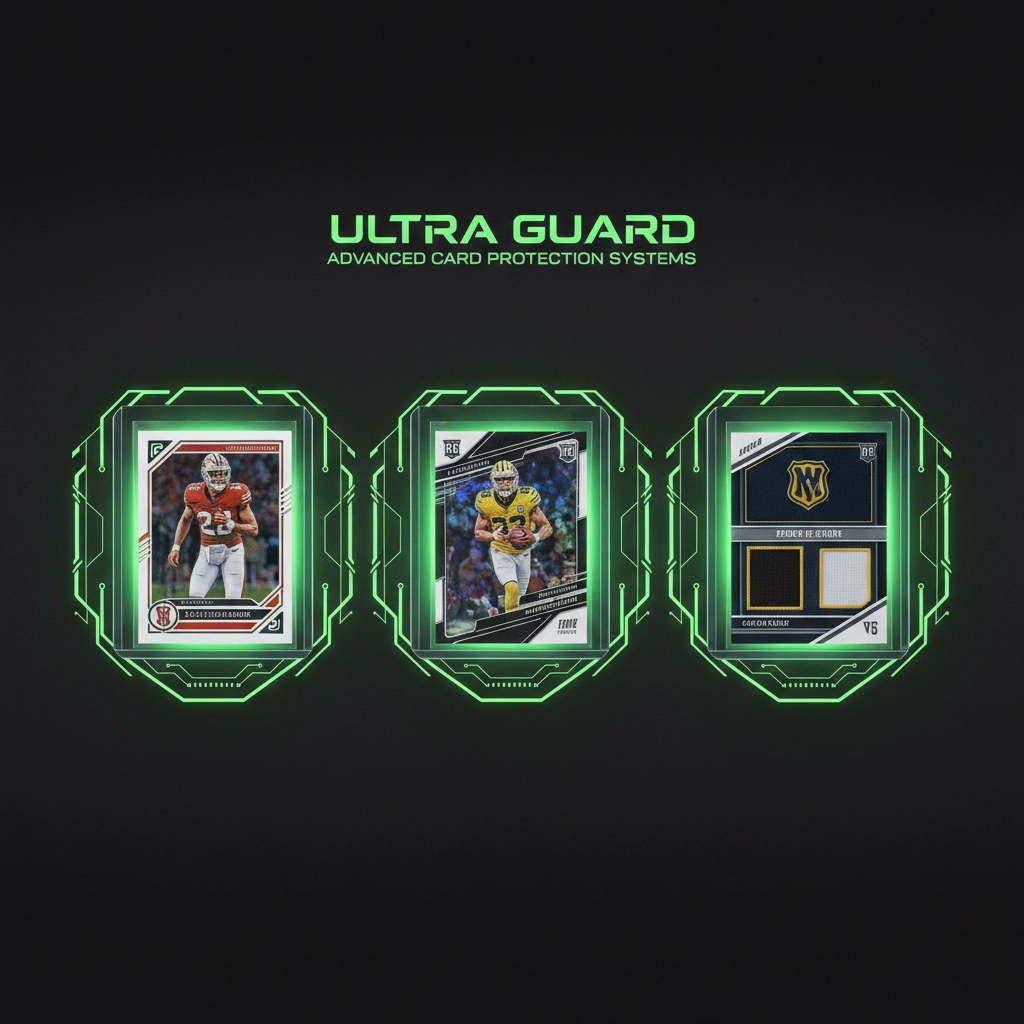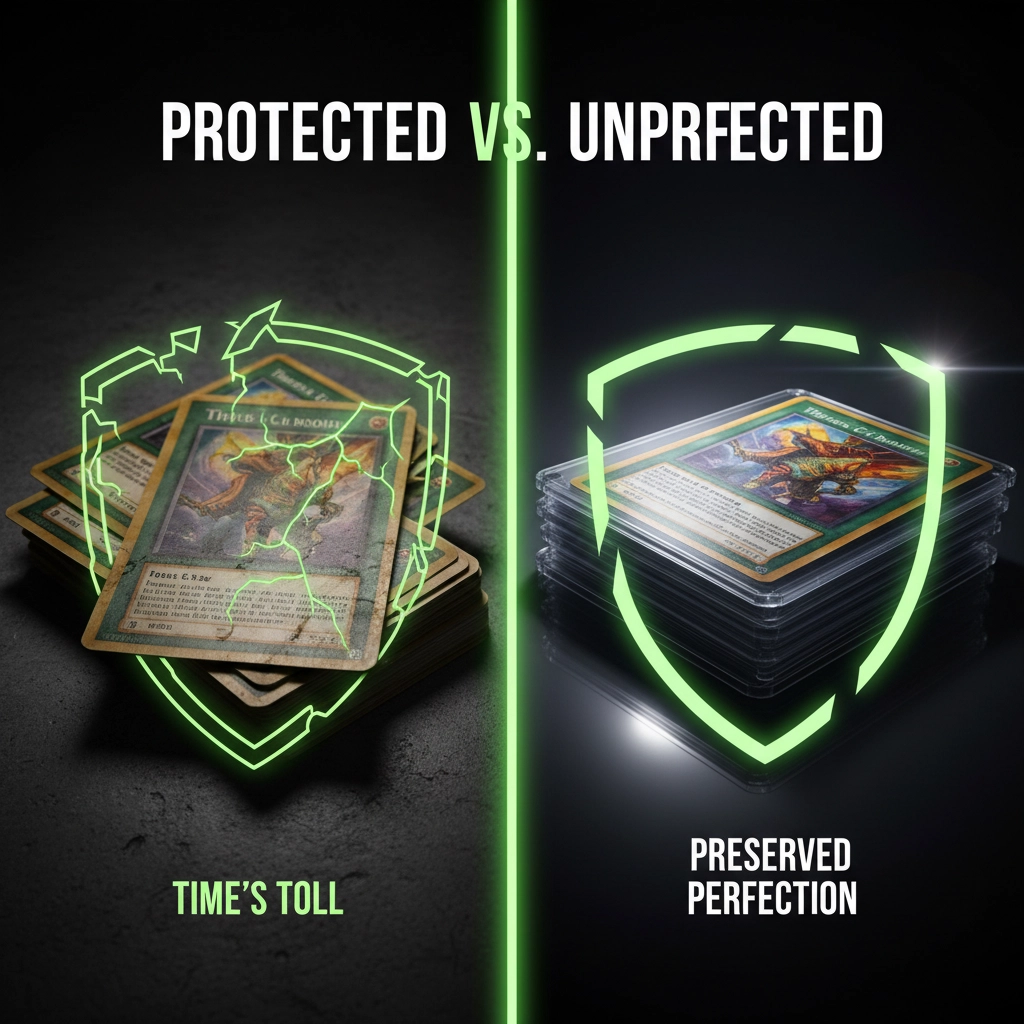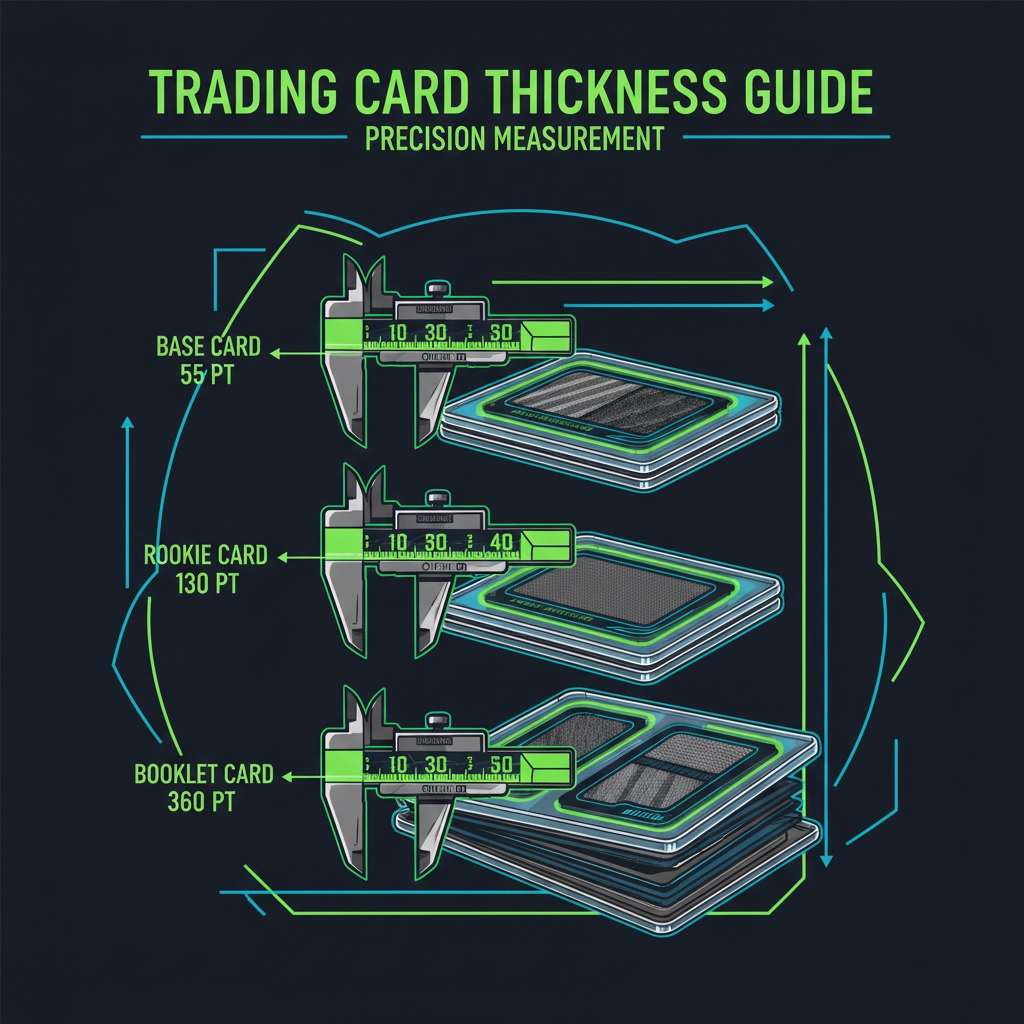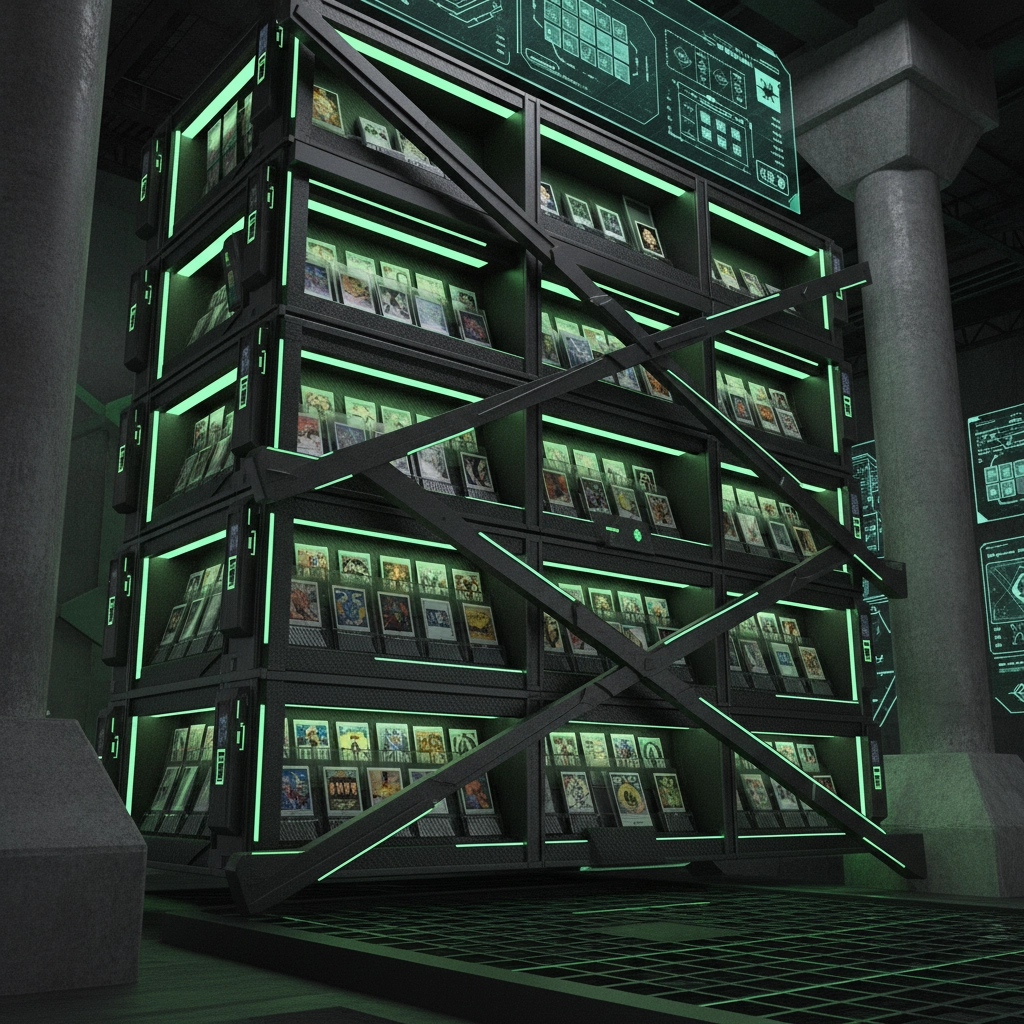Stop Wasting Money on Wrong Protection: How to Choose the Perfect Card Sleeves and Toploaders for Your Investment
- Dr. Mardis

- Oct 27
- 3 min read
Most collectors buy wrong protection. Cards lose value. Money wasted.
The problem is simple. People don't understand what they're buying. They grab random sleeves from the hobby shop. Wrong sizes. Wrong materials. Wrong approach.
This costs money. Real money.
What Actually Works
Card protection has two layers. Penny sleeves go first. Toploaders go second.
Penny sleeves are thin plastic. They prevent scratches and dust. Nothing more. They cannot stop bending or creasing.
Toploaders are rigid plastic cases. They prevent physical damage. They keep cards flat. They stop corners from bending.
Skip to main content if you already know this.
The Critical Mistake Everyone Makes
Never put unsleeved cards in toploaders.
This damages edges during insertion. Cards rattle inside the case. Debris gets trapped. The card gets scratched.

Proper method: sleeve first, then toploader. The sleeve creates a barrier. The toploader provides structure.
For valuable cards, double-sleeve. Two penny sleeves before the toploader. Cards stay cleaner longer.
Size Charts That Matter
Standard trading cards measure 2.5" x 3.5". Most toploaders are 3" x 4" internally.
Thickness matters more than length and width:
Standard thickness (20pt-35pt): Base cards, most modern cards Medium thickness (55pt-75pt): Thick rookies, some inserts Heavy thickness (100pt-130pt): Memorabilia cards, thick patches Extra heavy (180pt+): Booklets, multi-panel cards
Wrong thickness = loose cards that slide around. Or tight fits that damage corners during insertion.
Material Quality Differences
Cheap toploaders use recycled PVC. This material yellows over time. It makes cards look faded.
Quality toploaders use virgin PVC or polypropylene. These stay clear. They don't react with card surfaces.
Acid-free matters. Acidic materials cause discoloration. Your cards turn yellow or brown after months of storage.

UV protection blocks light damage. Premium toploaders filter harmful rays. Colors stay vivid longer.
Brand Analysis
Ultra Pro: Industry standard. Consistent quality. Wide size range available. Toploaders fit properly. Sleeves don't tear easily.
BCW: Budget option. Adequate protection for lower-value cards. Toploaders can be flimsy. Sizes run slightly large.
Pro-Mold: Premium choice. Magnetic holders available. Perfect for display. Higher cost justified for expensive cards.
Dragon Shield: Gaming focus. Excellent sleeve quality. Limited toploader selection. Good for frequent handling.
Bottom of page note: cheap protection often costs more long-term.
When Each Protection Level Makes Sense
Penny sleeves only: Cards under $5 value. Bulk storage. Short-term protection.
Sleeve plus standard toploader: Cards $5-50. Most collection pieces. Standard storage.
Double-sleeve plus premium toploader: Cards $50-500. Valuable rookies. Key cards.
Magnetic cases or screwdowns: Cards over $500. Grading candidates. Display pieces.
The math is simple. Protection cost should match replacement cost.
Common Sizing Errors
People buy 35pt toploaders for everything. Thick cards don't fit. Thin cards slide around.
Measure your cards. Rookies are often thicker than base cards. Inserts vary significantly. Memorabilia cards need heavy protection.

Jersey cards typically need 55pt minimum. Patch cards often require 100pt. Booklet cards need 180pt or larger.
Wrong size damages corners. This cannot be undone.
Storage Container Selection
Toploaders need proper storage boxes. Card boxes designed for raw cards don't accommodate toploaders properly.
Toploader storage boxes have correct dimensions. Cards fit without bending. Lids close properly.
Standard shoe boxes work for penny sleeves. They don't work for toploaders.
The Armored Cards Advantage
Premium protection requires premium products. Standard options work for standard cards.
High-value collections need specialized solutions. Military-grade materials. Enhanced UV filtering. Tamper-evident seals.
Armored Cards develops protection specifically for investment-grade cards. Not hobbyist protection. Not casual storage.
Cards worth protecting are worth protecting properly.
Practical Application Steps
Step 1: Sort cards by thickness and value. Step 2: Buy appropriate sleeves for each category. Step 3: Buy matching toploaders. Step 4: Get proper storage boxes. Step 5: Label everything clearly.

Skip fancy organization systems. Focus on protection first.
Cost Analysis
Quality sleeves: $0.02-0.05 per card Quality toploaders: $0.15-0.30 per card Premium magnetic cases: $1.50-3.00 per card
Compare this to replacement costs: $20 card damaged: $20 loss $100 card damaged: $100 loss $500 card damaged: $500 loss
Protection pays for itself with one prevented damage incident.
Red Flags to Avoid
Toploaders that yellow quickly. Sleeves that tear during insertion. Cases that don't close flush. Storage boxes that bend cards.
Generic brands often cut corners. Quality control suffers. Your cards suffer.
Buying protection from random sellers risks counterfeit products. Stick to established distributors.
Long-Term Considerations
Cards stored properly maintain value. Cards stored poorly lose value over time.
Environmental factors matter. Temperature changes cause expansion. Humidity causes warping. Light causes fading.

Protection systems must account for these variables. Cheap solutions fail under stress.
Final Assessment
Most money wasted on protection comes from buying wrong products initially. Not from buying expensive products that work.
Buy once. Buy correctly. Your cards will thank you.
The cost of proper protection is minimal compared to collection value. The cost of improper protection is your entire investment.
Choose accordingly.
Comments